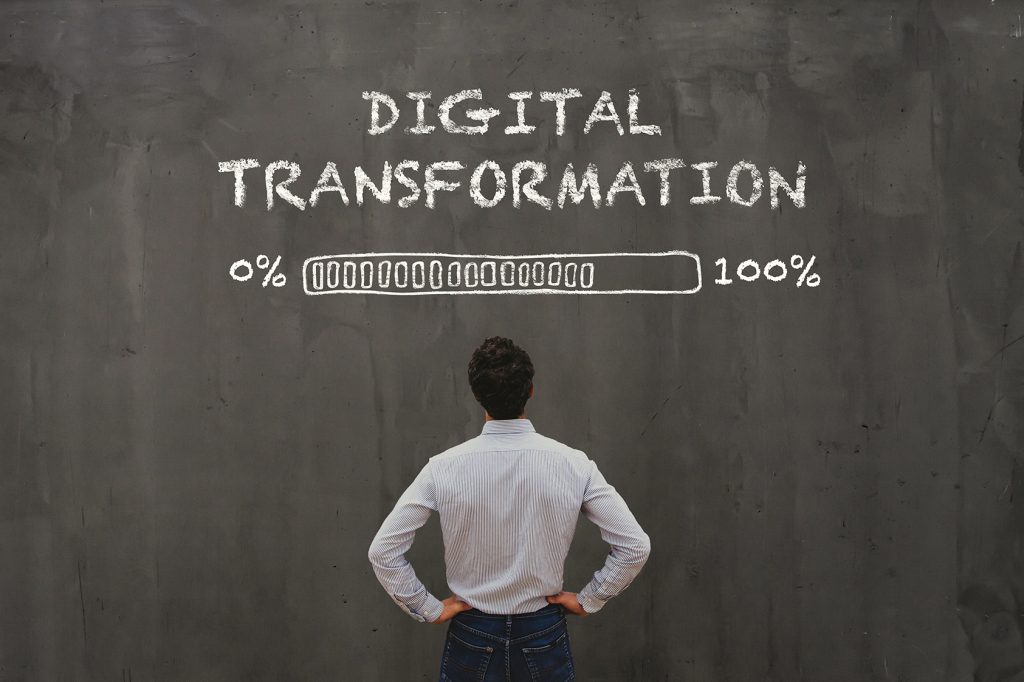
2020 was a rollercoaster of a year for everyone, and, like businesses in most industries, construction firms are still adjusting. One of the ways they’re managing the crisis is by evaluating digital technologies and construction at a pace that, prior to the pandemic, would have seemed impossible.
Sure, technologies like BIM, project management software, construction cameras, sensors, drones and robots were already starting to take hold, but PPE requirements, remote work, and the need to trim budgets has launched digital transformation in construction into warp speed. The research bears this out: In the Spring of 2020, IFS found that 75% of engineering and construction companies they surveyed plan to increase spending on digital transformation.
Here are three ways digital transformation will show up on the jobsite this year, helping firms to overcome the big challenges they’re facing:
1. Cloud-based data and project management.
Vast amounts of data are generated on the jobsite — from jobsite cameras, sensors, project management and estimating software, robotics and more. Managing this data alongside communications, bidding and budgeting information, materials tracking, equipment purchases and maintenance, compliance information and documentation and so on requires tremendous amounts of storage — and the cloud offers an infinite supply.
With all of that data stored in a central repository, firms can leverage data analytics to pinpoint inefficiencies and improve processes and decision-making. They can easily find and retrieve data needed to satisfy auditing and reporting requirements, eliminating hours of painstaking, manual work.
Cloud-based software platforms promise automated, more streamlined processes that reduce manual tasks and increase accuracy. They enhance collaboration, particularly between geographically dispersed stakeholders — a key requirement now that many back office employees are still working remotely. Being able to quickly share photos, documents and other critical information with crews, architects, designers, project managers and building owners will help reduce schedule delays, while giving everyone the data they need to make good decisions.
2. Automation and productivity.
It might start looking a bit like a Sci-Fi movie set on the jobsite, as augmented reality (AR), wearables, drones and robots and become commonplace. Firms are using augmented reality technology to create 3D visualizations of future projects to help building owners and tenants see the jobsite via remote virtual tours. Workers are being trained to perform tasks and learn new skills using AR-assisted hands-on tutorials delivered on mobile phones, ipads or smart wearables. Drones can fly overhead, both in preconstruction and throughout a project’s lifecycle, surveying large plots of land or hard-to-access jobsites. They offer a birds-eye view that can be recorded and shared to keep stakeholders updated on progress.
And robots? You betcha. AI-powered robotics is gaining traction as a way to automate routine tasks on the jobsite, especially in modular construction. They can weld, pack, dispense and cut materials, all with improved accuracy and less waste. Some experts claim that 3D printing robots can help firms cut costs by up to 70%.
3. Worker safety.
Digital technologies can also help reduce risk and improve worker safety. Take, for example, wearables. IDC predicts 279 million wearables will be in use by the end of 2023 — and firms can use them to increase jobsite safety. Wearables featuring biometrics help to monitor workers’ heart rate and temperature, reducing the risk of heat exhaustion and associated health issues when working in extreme weather conditions. And AI-powered sensors can be used to detect when machinery and equipment are in need of repair, reducing the risk of malfunction and worker injury.
Construction cameras are another digital tool that’s increasingly common on the jobsite. With live viewing and intelligent security monitoring, they can help project managers monitor workers remotely and ensure they’re following proper procedures and policies. In the near future, look for cameras to begin incorporating technologies that target CDC compliance to appear on the jobsite, such as recognition software that can detect whether workers are wearing Personal Protective Equipment (PPE) or not.
All of these technologies generate data, which can be fed back into various software platforms to help fine-tune a broad range of processes and procedures.
No Turning Back When it Comes to Digital Technologies and Construction
Deloitte’s 2020 Engineering and Construction Industry Outlook confirms what we already know: Firms are facing shrinking margins as a result of increased project complexity, rising cost of materials and fierce competition. Supply chain disruptions resulting from the pandemic has made materials harder to buy, while workers impacted by the virus are quarantined and missing work. Meanwhile firms are spending money and resources enforcing CDC requirements and purchasing PPE equipment, grappling with logistics and late shipments, and trying to meet tight deadlines with skeleton crews.
While these problems are likely to persist over the coming months, digital technologies can help teams collaborate more effectively, navigate scheduling delays, manage budgets more efficiently and ensure high levels of productivity on the jobsite. And now that firms have witnessed the many benefits of digital transformation throughout the pandemic, it’s a safe assumption the momentum will accelerate even more throughout 2021 and beyond.
TrueLook can help you reach your digital transformation goals, with market-leading construction camera solutions that meet the needs of any project. Check out a live demo today.

